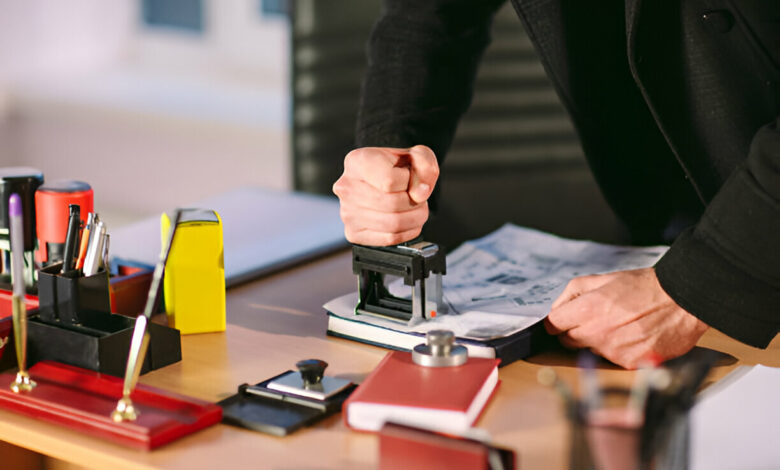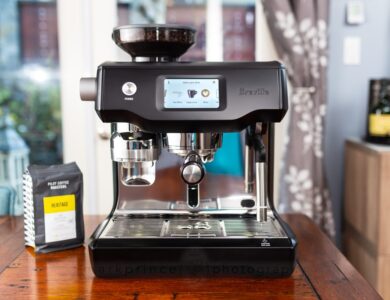Modern Stamps Making Business History

For millennia, stamps have authenticated documents and marked ownership—from ancient clay seals to today’s office essentials. While their forms have evolved, their purpose remains unchanged: creating trusted, verifiable marks.
Modern businesses now benefit from this age-old solution with convenient, efficient self inking stamps that blend tradition with innovation for today’s fast-paced work environments.
Ancient Origins: The First Authentication Tools
The stamp’s story begins in Mesopotamia around 3000 BCE:
- Early civilizations used cylinder seals to authenticate clay tablet contracts
- Egyptian officials employed scarab seals for royal decrees
- Chinese dynasties developed intricate chops for imperial documents.
These primitive stamps served the same fundamental purpose as modern ones – creating trusted, verifiable marks of authority. The British Museum’s collection includes stunning examples of lapis lazuli and carnelian seals that would put today’s office stamps to shame aesthetically.
Medieval to Industrial: Stamps Become Standardized
The Middle Ages saw wax seals dominate European commerce:
- Royalty used them to authenticate proclamations
- Merchants sealed shipments against tampering
- Churches validated documents with ecclesiastical seals
The real revolution came in 1844 when Charles Goodyear patented vulcanized rubber. Suddenly, durable, mass-produced rubber stamps became possible.
By the 1860s, offices worldwide adopted stamps for:
- Document approvals
- Financial transactions
- Legal filings.
Traditional Business Uses That Still Matter
While stamp technology advanced, core business applications remained constant:
Legal Authentication
- Contract execution
- Notary public seals
- Certified documents.
Operational Efficiency
- “Approved” or “Paid” markings
- Date tracking
- File classification.
Brand Representation
- Company logos on correspondence
- Proprietary markings
- Quality assurance seals.
These traditional uses established stamps as indispensable office tools long before the digital revolution.
The Custom Stamp Revolution in Modern Business
Today’s innovative companies are finding fresh applications for custom stamps:
1. Sustainable Branding Solutions
Forward-thinking businesses use stamps to:
- Replace disposable labels on packaging
- Create reusable branded shipping materials
- Mark eco-friendly product tags.
2. Hybrid Digital-Physical Workflows

Modern offices combine stamps with technology by:
- Adding QR codes to traditional approval stamps
- Creating trackable inspection stamps
- Developing security stamps with microprinting.
3. Artisanal Marketing Appeal
Small batch producers leverage stamps to:
- Hand-mark limited edition products
- Create signature packaging touches
- Develop collectible stamped elements.
4. Operational Agility
Custom stamps enable businesses to:
- Quickly update markings without reprinting
- Create temporary process stamps
- Develop department-specific identifiers.
Creative Rubber Stamps helps businesses implement these modern applications through their customizable stamp solutions.
Why Stamps Thrive in the Digital Age
In our increasingly virtual world, physical stamps offer unique advantages:
- Tangible Trust – A stamped document carries psychological weight that digital signatures often lack.
- Process Visibility – Stamped markings create clear visual workflows in shared workspaces.
- Brand Personality – Hand-stamped elements convey authenticity in a mass-produced world.
- Analog Security – Certain stamps provide forgery-resistant physical verification.
Conclusion: An Ancient Tool for Modern Challenges
Since ancient clay seals, this tool category has transformed continuously to create today’s self-inking stamps without changing their essential function. Today’s stamps unite historical elements with modern capabilities by providing tangible verification in digital operations and green-based alternate solutions to adhesive stickers and personalized logo representation systems.
For forward-thinking businesses, stamps remain an unexpectedly powerful tool for operational efficiency and authentic communication.



